Nature, history, good food, hospitality and strong emotions are the essential ingredients for a perfect holiday. In Cilento, one of the most unspoiled areas of Campania, you will find them all generously distributed between amazing coastlines and a mesmerising hinterland. What can you see and do in Cilento? We have rounded up some ideas for you.
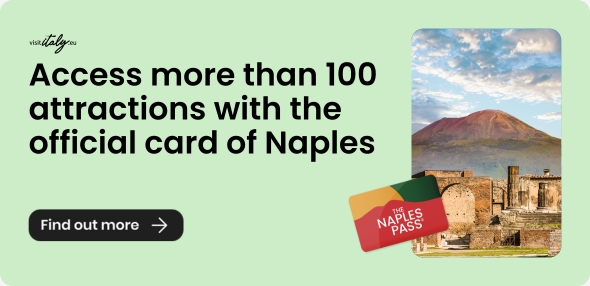
Where is Cilento?
In some ways, this place is still little known to mainstream tourism, but the secret is beginning to crack. And that is a fortune, because this part of Campania stretching from Salerno to the border with Basilicata is an area teeming with history and beauty. Certainly, one of those destinations to keep an eye on for your next holiday. And not just in summer.
With its Magna Grecia archaeological sites, breathtaking beaches, exciting outdoor activities, villages suspended in time and excellent regional cuisine, there are plenty of reasons to visit Cilento all year round.
Cilento and Vallo di Diano National Park
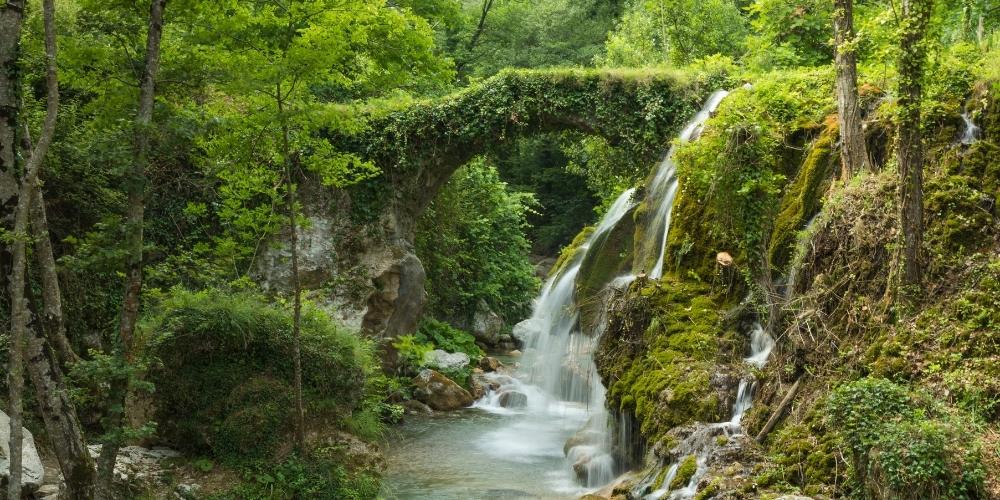
A large portion of the Cilento area is part of the Cilento and Vallo di Diano National Park, a UNESCO World Heritage Site since 1998 that also includes the famous archaeological sites of Paestum and Velia and the Certosa di Padula. It ranges from the coastline dotted with some of Italy's most beautiful seaside villages to the Apennines.
Give yourself some days to appreciate the many facets of this wonderful place and visit it in its entirety. Any suggestions? The Cammino di San Nilo and the Via Silente are two excellent alternatives for exploring the Cilento walking or cycling. We wrote on these two itineraries in our article about hikes and routes in Campania.
Paestum
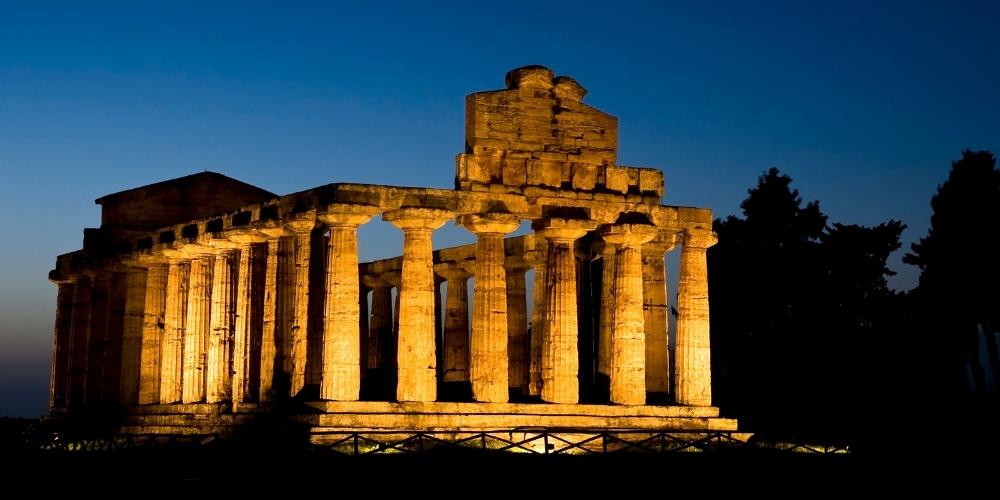
Undoubtedly one of the most suggestive places in Campania, the ancient city of Paestum, represents Cilento's Greek past. Not only the famous three Doric temples (the Basilica of Hera, the Temple of Neptune and the Temple of Athena), the amphitheatre, the domus rich in mosaics and the forum, but also the National Archaeological Museum. The complex houses one of the most valuable archaeological collections in Italy. Among the interesting finds from the excavations is the Tomb of the Diver, a rare example of Greek figurative painting.
Want to make the most of the view on Paestum? In September, you can admire the archaeological area from above during the International Balloon Festival. Also, consider Paestum as a summer destination: the coastline offers long beaches lapped by crystal-clear waters.
Palinuro

The blue sea winding its way through a myriad of caves, small inlets and dream beaches makes Palinuro one of the most popular destinations of the Cilento, a place that inevitably rhymes with summer. If you like diving, then you'll certainly love its seabed and underwater caves. Highlights include the Grotta Azzurra and the Grotta del Sangue (Blood Grotto), which you can visit by booking a boat tour. The Baia del Buon Dormire, accessible only by sea, is one of the most enchanting in Cilento. Other seasides you'll cherish are the Saline, Dune and Arco Naturale beaches.
For your stay, choose a quiet location away from the traffic chaos. Located 3 km from Palinuro, Fattoria Albamarina, with its Malida House residence, is surrounded by olive groves, vineyards and chestnut trees. The ideal place to switch off and relax amidst nature and unique flavours.
Marina di Camerota
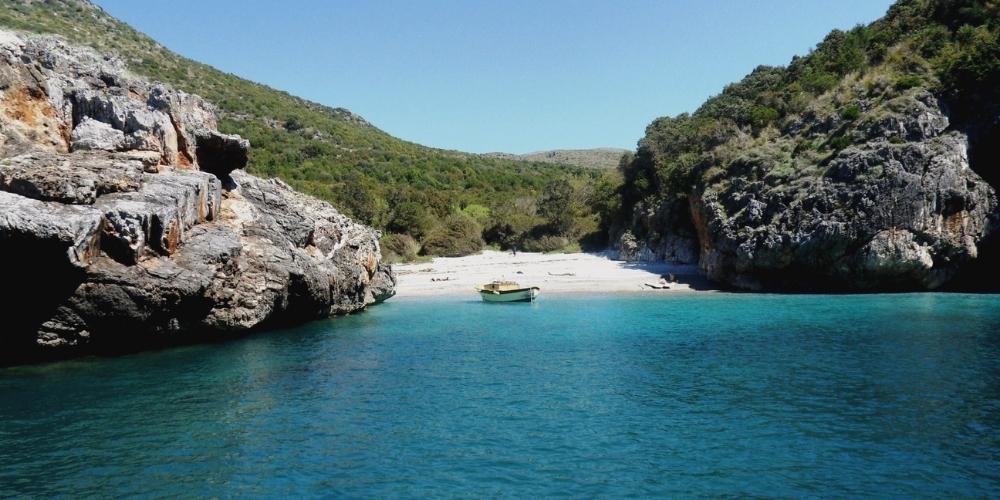
Rocky cliffs overlooking the sea, ancient defensive towers, centuries-old olive trees and some of the most beautiful beaches in Italy. Marina di Camerota is a popular destination for tourists attracted by the spectacular scenery of its jagged coastline that conceals almost tropical sandy stretches accessible by boat or through footpaths. The Sentiero del Mediterraneo takes you to enchanting bays along an unmissable scenic route: the Pozzallo beach, Cala Bianca and the Baia degli Infireschi. Here you will find the old tuna fishery, active until the middle of the 20th century and now a ruin.
After an intense day of swimming and trekking, fatigue may set in and choosing to stay overnight in the vicinity can be a good strategic choice. La Casa di Paolo is a well-kept boutique hotel in an excellent location, just a short walk from the seaside and the port of Marina di Camerota.
Orria
Amid the olive groves, vineyards and broom surrounding the green Cilento hills sprouts this small town with its high stone bell tower and sloping-roofed houses facing each other along the narrow streets streaming through the centro storico.
Orria is a hidden gem in the heart of the Cilento National Park. With few inhabitants but a solid artistic and cultural connotation, it is a village to keep in mind for an authentic and slow experience outside the traditional travel routes.
The urban network is truly delightful, showcasing a mix of historical landmarks, gorgeous fountains, and religious buildings. Additionally, you can't overlook the imaginative allure of Piano Vetrale, the famous hamlet that has been captivating visitors since the late 1970s. Known for its vibrant and artistic murals adorning the old facades, this charming village is an open-air museum that is both aesthetically pleasing and full of character.
Looking for a unique creative break? Drop by CilentoLab in Via Garibaldi and say hi to Giulia for some fancy jewellery and designer accessories shopping. Furthermore, you'll also discover a fun, creative hub where to try your hand at engaging workshops and taste a glass of wine at sunset while learning to work with clay or paint on glass.
Pisciotta
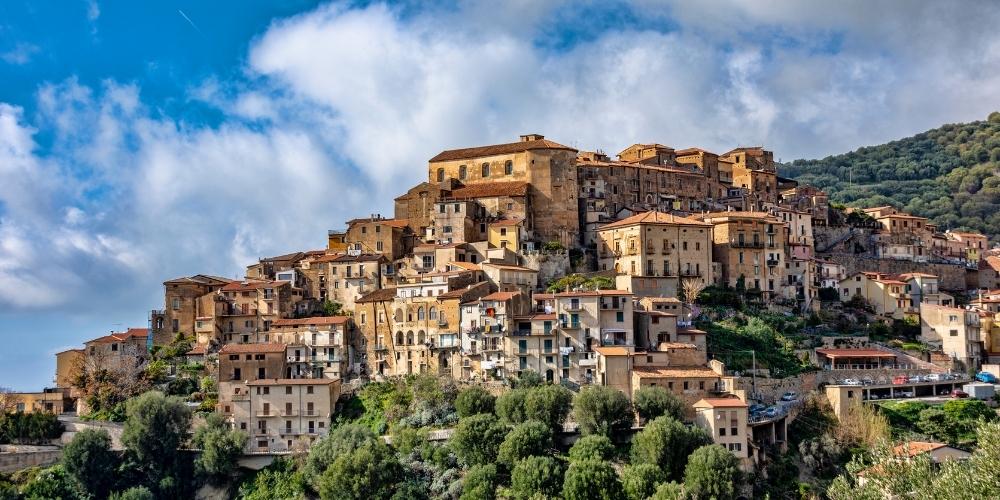
A hilly town overlooking the enchanting Cilento sea. Pisciotta is a small medieval village waiting to be discovered. Before exploring the borgo, leave your luggage in one of the b&b's dotted around the area. We suggest Santo Mercurio Country House, an elegant country residence that boasts magnificent views from the Santo Mercurio hillside.
The three hamlets of Pisciotta, Marina, Caprioli and Rodio, stretch from the hill to the coastal area. The historic centre is just as you would imagine when you look at the town from a distance: a maze of narrow streets, typical Cilento houses, old craft shops, chapels, small squares and belvederes. Lookout from the one in Piazzetta del Cannone, where the view ranges from the blue of the sea to the green of the olive trees. By the way, taste the oil produced from the local olive, the Pisciottana.
As you stroll through the narrow streets of Pisciotta, you will often be accompanied by friendly four-legged locals: shy and indifferent cats who will silently observe you as you wander. Try to recognise the town's stately buildings, such as Palazzo Marchesale, Palazzo Francia and Palazzo Saulle. The latter houses the MIC - Museo dell'Identità del Cilento (Museum of the Identity of Cilento) and is also one of the three residences that accommodate the guests of La Casa sul Blu, an albergo diffuso (scattered hotel) that stands out for its welcoming character and its view... "on the blue”.
"You can't die here". Cilento, among the places with the highest number of centenarians in the world

"You can't die here", said Joachim Murat during his visit to the quaint medieval village of Castellabate in 1811. And it seems that the King of Naples had a point. The Cilento is, in fact, a long-lived region, with a high number of people approaching (or exceeding) the century mark. And they do so while boasting enviable health.
Acciaroli, one of the gems of the coast (even Ernest Hemingway is said to have stopped here on several occasions), is particularly famous for the number of super elderly people who live in the characteristic seaside village. This phenomenon is influenced by Cilento's distinctive "vivere bene", a healthy and happy lifestyle supported, among other things, by a healthy diet of genuine, zero-kilometre products. Food. So, what do you eat in the Cilento?
What to eat in Cilento
In Battipaglia, the gateway to the Cilento region, you can get your fill of buffalo mozzarella. Its abundant local version (weighing from one kilo upwards), zizzona, owes its name to its unusual shape: as you can easily guess, it undoubtedly resembles a breast.
Ciambotta (or cianfotta) is a traditional fresh and colourful dish rich in vegetables: aubergines, peppers, potatoes and tomatoes, to which is added Cilento PDO extra virgin olive oil and fresh local Cacioricotta cheese.
Try the tasty first courses, such as lagane with chickpeas and cavatieddi with meat sauce; tempting side dishes such as spicy chickpeas and “ammollicati” artichokes; and the many fish recipes, such as baccalà (cod) alla cilentana.
To fully experience the fragrances and flavours of the Cilento, always choose authentic places that speak of the environment, its history and traditions. The Enoteca Osteria Perbacco in Pisciotta, a short distance from Naples, Sorrento and the Amalfi Coast, is one of those places where you can make a satisfying full immersion in the gastronomic culture of the place in a warm and welcoming setting.
Project realized with the co-financing of PSR 2014/2020 in Campania - SSL GAL Casacastra Measure 19, Sub-measure 19.2 T.I. 16.3
About the author
Written on 06/07/2023


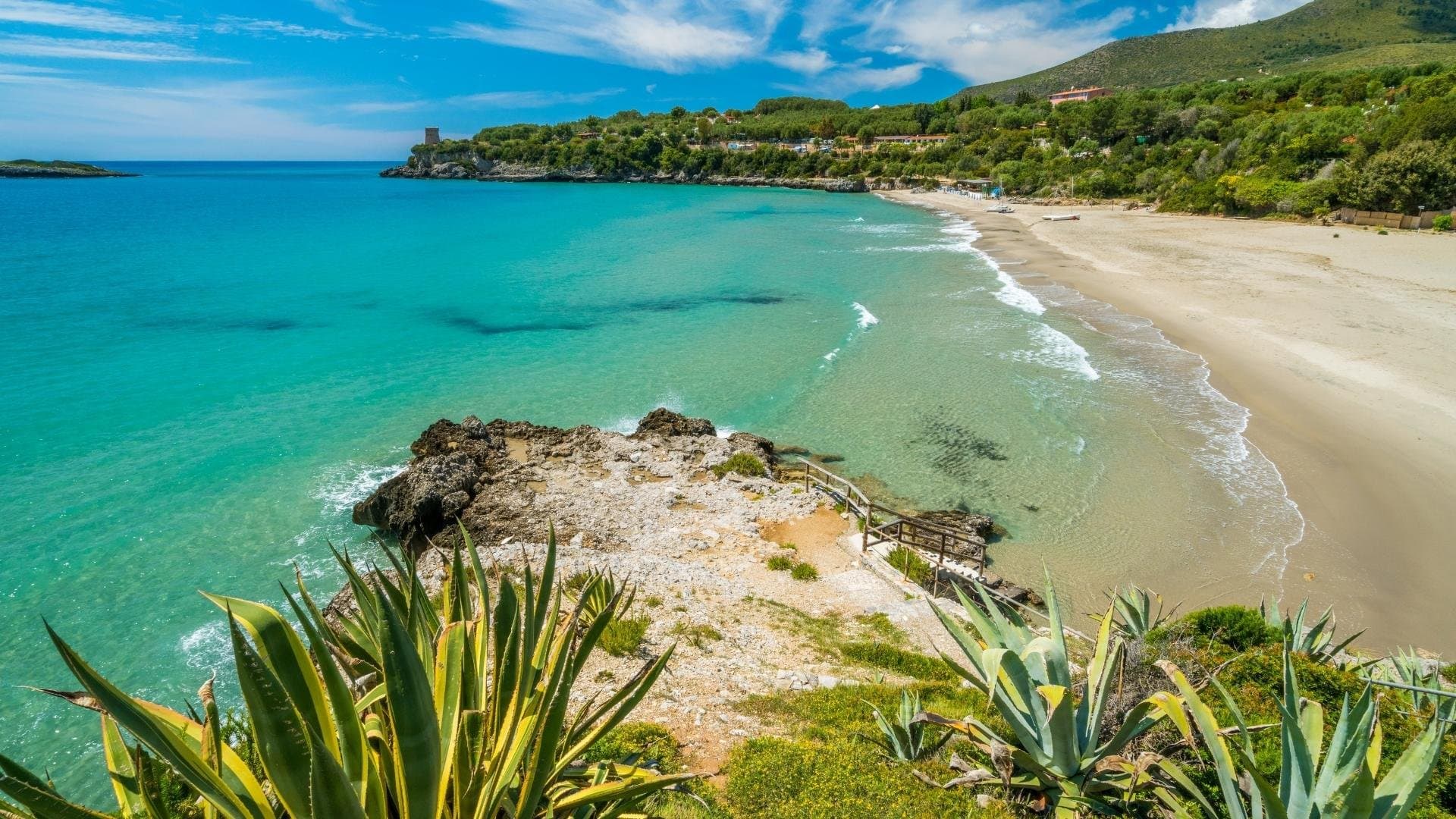

Lorena Calise
The secret charm of an ancient land that will leave you speechless: the Cilento.